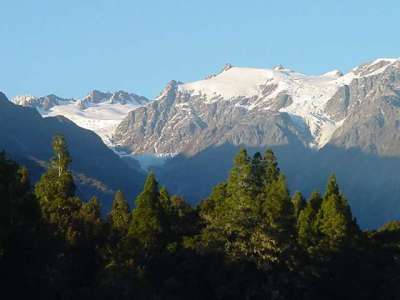Alpine Myst & Ice Age: Glacial Mud Geology
|
|
Glacial clay belongs to the green family of clays. The clays colloidal structure means that the clay is formed in particles as fine as the mist in a fog bank.. This tremendous surface area of the clays colloidal particles accounts for its incredible absorptive action.

Glacial clay can be used directly from the ground. It reveals a smooth texture when rubbed between the fingers. This fine texture can be enhanced with proper screening and the addition of the correct amount of water. The greenish/grey clay is a homogeneous mass of a soft putty-like consistency when first removed from the clay beds. Over the years, studies have included chemical analysis, x-ray diffraction, ultra and electron-photomicrography and electrophoretic studies that show that Glacial Clay is a natural product composed of quartz and mica, representing a small course fraction, or grit, and an aluminum silicate, the particles of which are of such small dimension that some of them cannot be made clearly distinguishable even with the electron microscope.
When glacial clay is mixed, whipped or beaten with a rotary blade, the clay's consistency changes. It goes from a dense, hard packed, lumpy condition to a free flowing, less viscose, almost meringue like texture. After being processed the clay is easier to work with and can be filled into jars, bottles and tubes with the minimum of difficulty.
In tests conducted over the past twenty ears it has been found that most clays have a pH factor range from 7 - 14 on the alkaline side of the scale. Glacial colloidal clay has a pH factor of 6.5 to 7.3, as close to neutral as possible. This is very desirable for skin and hair applications. Glacial clay in its natural state, has a moisture content of 35.5%. Unit weight (wet) is 109 Ibs/cu foot. Specific gravity is 2.75. When comparing the percentage of mineral content, with other clays, the glacial clay is closest to the Delft Marl which is approximately 50-64% silica, 13-15% aluminum and 4-10% iron.
Chemical composition of glacial colloidal clay is:
| Mineral | Percentage |
| Silicon | 50 to 64% |
| Aluminum | 13 to 15% |
| Iron | 6 to 10% |
| Calcium | 4 to 10% |
| Sodium | 2 to 4 % |
| Magnesium | 2 to 6 % |
| Potassium | Up to 2 % |
| Other | Includes more than 25 minor minerals and traces of rare earths |
<< Please click here to return to the Alpine Myst & Ice Age product range >>